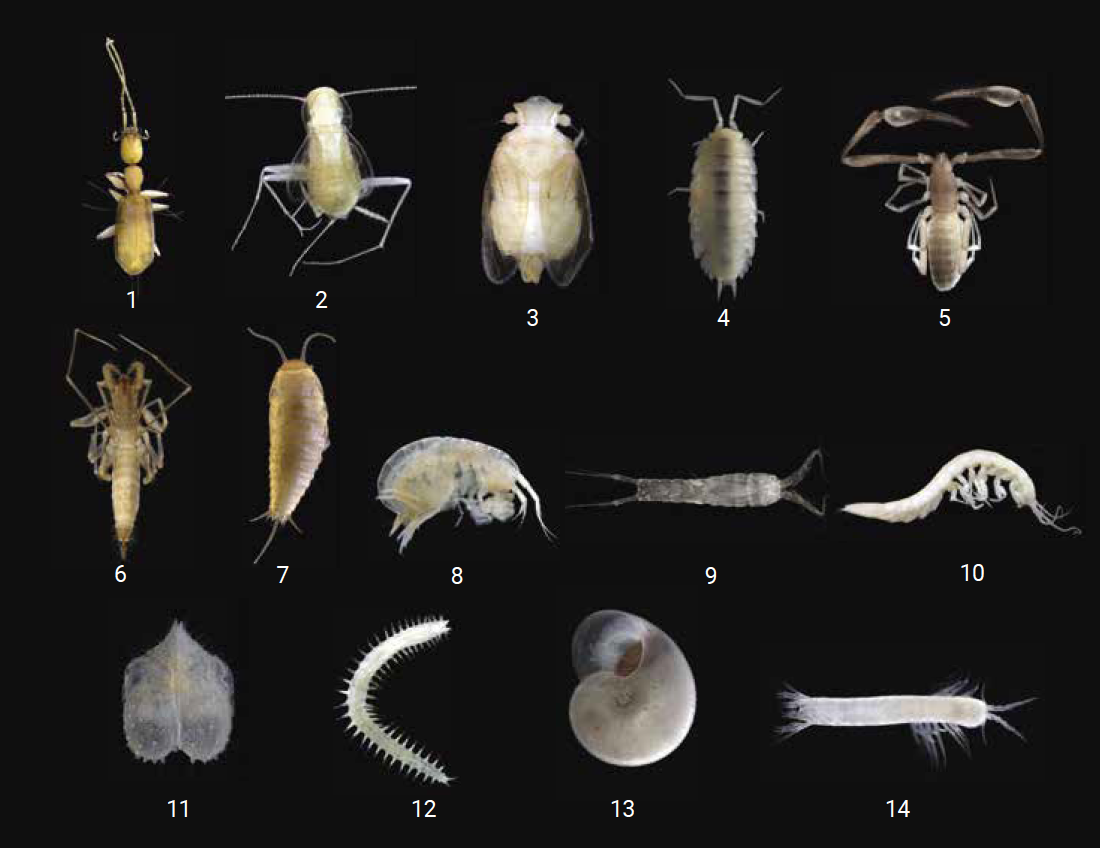Some of the most surprising animals of the Pilbara live in the perpetual darkness of underground aquifers, fissures, voids and caves. Discoveries since the late 1990s of hundreds of highly specialised, narrowly endemic subterranean invertebrates in the Pilbara (and elsewhere in Western Australia) are one of the great unfolding stories of ecology.
The animals living in groundwater, known as stygofauna, are dominated in the Pilbara by crustaceans – ostracods, copepods and amphipods. The Pilbara’s troglofauna – air-breathing animals living in voids a metre or more below ground – include bugs (mostly planthoppers), cockroaches, isopods, millipedes, arachnids and diplurans (two-pronged bristletails).
The diversity of subterranean animals in the Pilbara is globally significant – one of the highest, if not the highest, in the world for both stygofauna and troglofauna. More than 600 stygofauna species and close to 700 troglofauna species have so far been collected, and the total tally for the Pilbara is likely to approach 3000 species. Almost all are unique to the bioregion.
Subterranean ecosystems were probably initially colonised, as refugia, as inland Australia became increasingly arid over the past 5–10 million years and surface waters became ephemeral. Despite the lack of light (and thus no photosynthesis), limited sources of energy and often low oxygen, subterranean ecosystems offer the benefit of stability – unlike many surface habitats, particularly in arid areas. Subterranean animals are typically colourless and eyeless but have highly developed chemical and touch receptors. They mainly rely on organic matter seeping from the surface to sustain bacteria, archaea and fungi at the base of their food web. Due to energy constraints, subterranean animals typically have a slower metabolism, lower reproductive rate and longer lifespan than related animals on the surface.
The surging discoveries of subterranean animals in the Pilbara have been due mainly to surveys conducted for assessments of large mine proposals. With pits that can extend 20 kilometres and down to depths of hundreds of metres, and dewatering needed of up to 150 gigalitres a year, big mining projects can threaten entire populations and entire species of subterranean animals. Subterranean animals can also be threatened by the disposal of water, via reinjection into aquifers for example, or its use for irrigation. One subterranean community has been listed as endangered and 3 are listed as priority 1.
Conserving subterranean animals is challenging. Their small ranges make them highly vulnerable to extinction from single developments and little is known about their ecology and distribution. An underlying barrier is the low level of awareness by the public and policymakers – ‘there is no impetus to protect species that people know little about and which have poorly documented ecological roles’.
